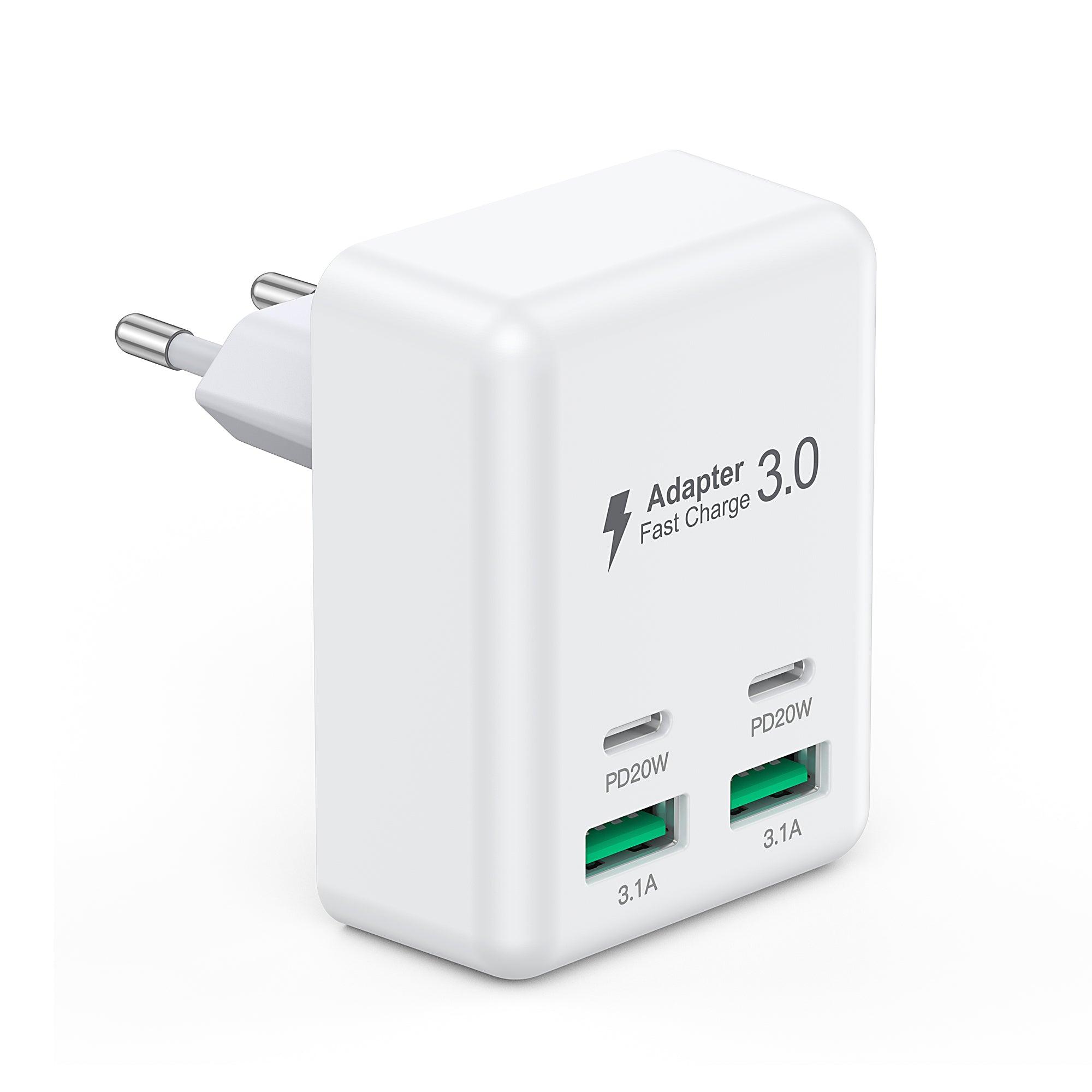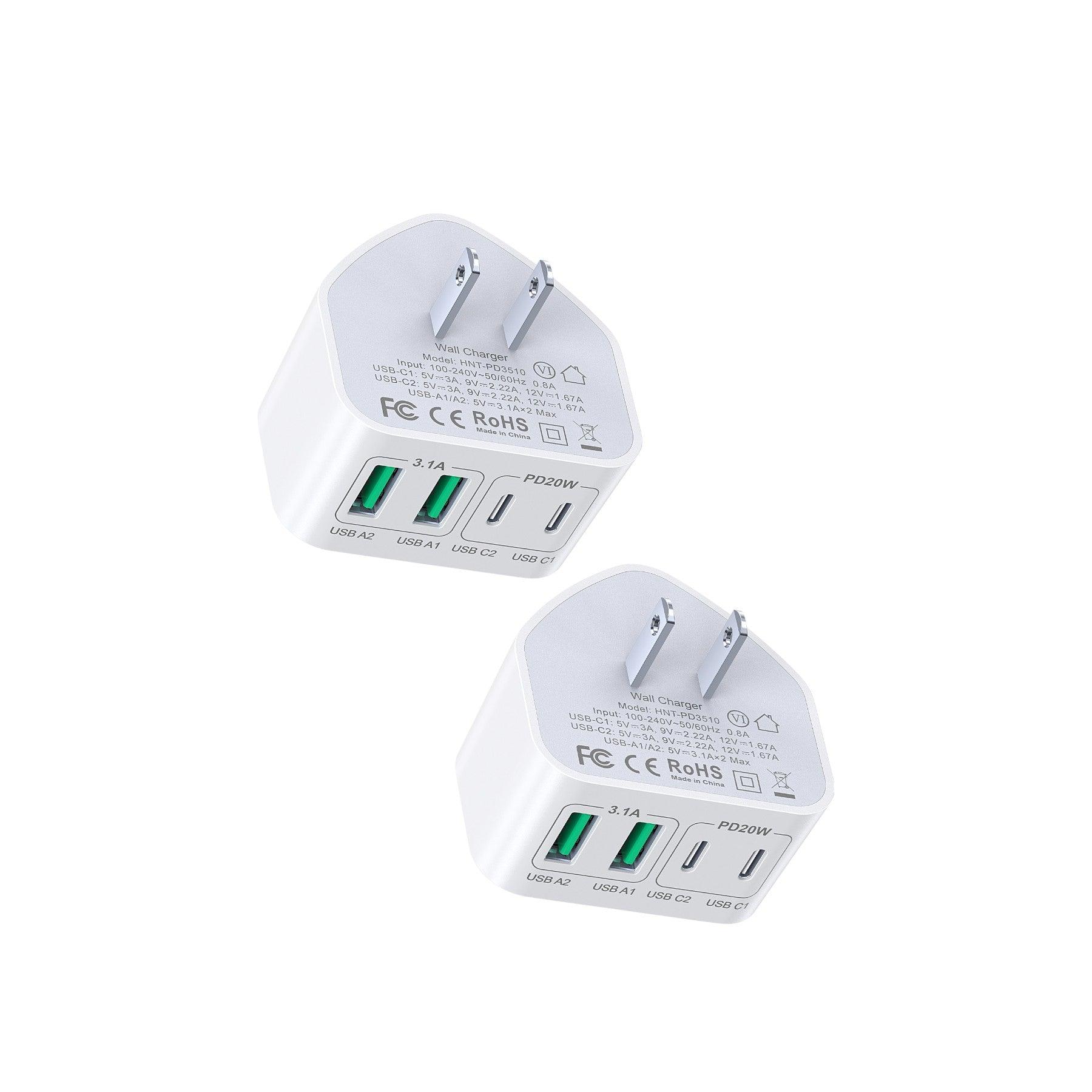Generally, most Android phones require a USB-C charger and charging cable. Older devices may use a wall charger with a USB-A plug but require a micro-USB charging cable. iPhones, on the other hand, mostly require a Lightning cable and charger. However, from the iPhone 15, Apple has adopted USB-C, so you can use a USB-C charger and charging cable to charge these models.
Filter
Price
Availability
-
In stock (12) -
Out of stock (0)
Number of USB-C Ports
-
1 (4) -
2 (7) -
3 (1)
Number of USB-A Ports
-
1 (3) -
2 (5)
Wattage (W)
-
25 (1) -
60 (2) -
<100 (9)
Featured product
FAQs
If you have an issue or question that requires immediate assistance, you can click the button below to chat live with a Customer Service representative.
Customer support team from: 9am to 17:30pm daily.Average answer time: 2h.
What type of phone charger do I need?
Does it matter which charger you use to charge your phone?
No, all USB chargers will provide at least basic levels of power to any phone, although it may be very slow to charge. However, the charger you use and its specifications matter if you want fast charging speeds.
Can I damage my phone with a more powerful charger?
No. Based on the supported charging protocols, your smartphone will negotiate and limit the power it draws from the charger.
How to use wireless charger for iPhone?
To use a wireless charger for an iPhone, simply plug the wireless charger into a power source using its included cable and adapter. Then, place your iPhone on top of the wireless charger's charging pad. Make sure the iPhone is properly aligned with the charger's coils for efficient charging. Once placed correctly, your iPhone should start charging wirelessly.
Can I charge my phone with a weaker charger?
Yes, it will just take longer.
ls fast charging bad for my phone's battery?
No, but it also depends. Phones are supplied with batteries designed for fast charging, so fast charging certainly isn’t dangerous. However, batteries may degrade slightly quicker when using fast charging in the long term.
How does a wireless charger work for iPhone?
Wireless chargers use electromagnetic induction to transfer energy from the charger to the iPhone without the need for a physical cable connection. Inside the wireless charger, there are coils of wire that generate an alternating electromagnetic field when connected to a power source. Similarly, the iPhone has coils that receive this electromagnetic field and convert it back into electrical energy to charge the battery.
ls wireless charging good for battery in iPhone?
Wireless charging is generally considered safe for the battery in an iPhone. Modern iPhones are designed to manage charging efficiently, including wireless charging. However, it's essential to use a reputable wireless charger and avoid exposing your iPhone to extreme temperatures while charging, as this can potentially affect battery health over time.
Why is my iPhone charger not working?
Your iPhone charger may not be working due to these common reasons:
1. Faulty Charger or Cable: Check for any visible damage to the charger or cable. Try using a different charger or cable to see if the problem persists.
2. Dirty Charging Port: Clean the charging port on your iPhone with a soft brush or compressed air to remove any debris.
3. Software Issues: Restart your iPhone or update its software to the latest version to address any potential software glitches.
4. Power Outlet Issues: Try plugging the charger into a different outlet or using a different power source to rule out any issues with the outlet.
5. Device Issues: There may be underlying hardware issues with your iPhone that are preventing it from charging properly.
What do I do if my phone charger is plugged in but not charging iPhone?
If your iPhone isn't charging when the charger is plugged in, try these steps:
1. Ensure the charger is securely connected to both your iPhone and the power outlet.
2. Try using a different charging cable.
3. Clean the charging port on your iPhone.
4. Restart your iPhone.
5. Test with a different power outlet.
If the issue persists, consider replacing the charger or contacting Apple support.
































